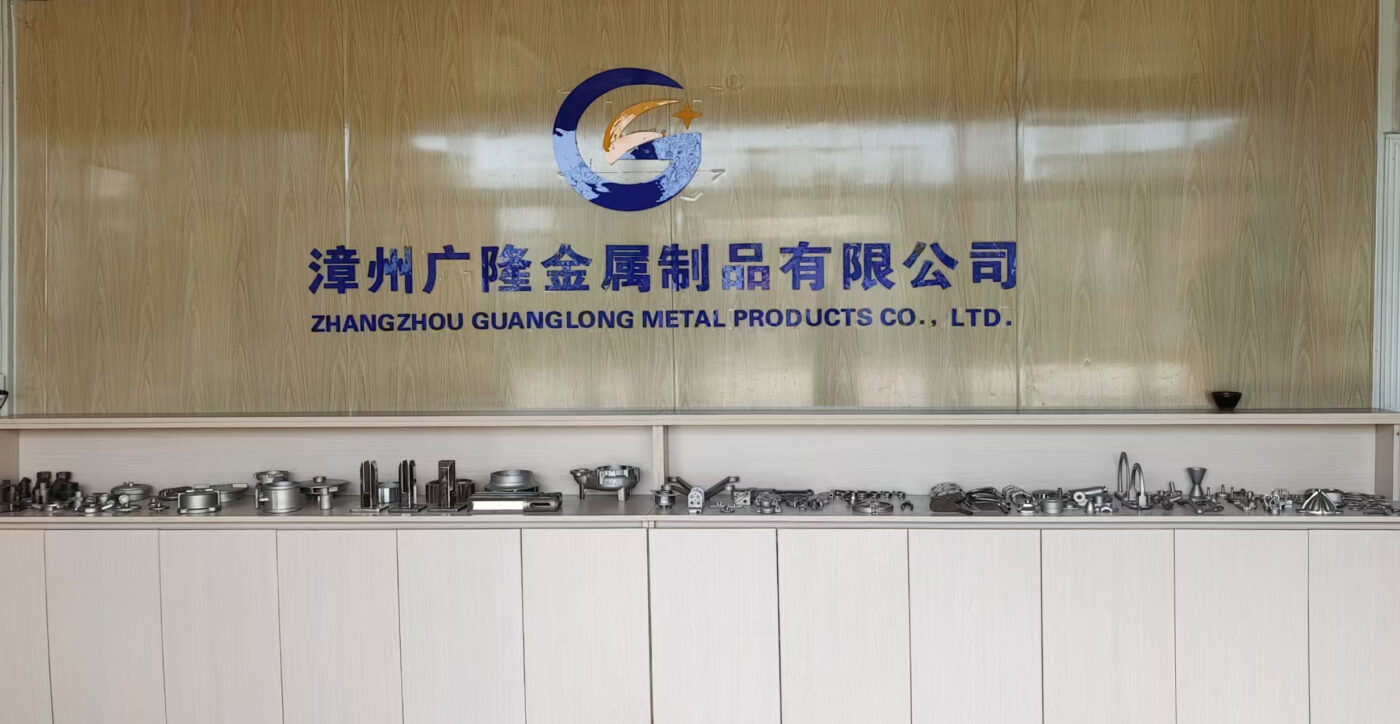18-Step Investment Casting Process: Master the Art of Precision Manufacturing
Are you ready to unlock the secrets of precision manufacturing? Welcome to the world of investment casting, an 18-step process that’s revolutionizing the creation of complex, high-quality parts.
In this comprehensive guide, we’ll take you on a journey through each intricate stage of the investment casting process, from wax pattern creation to final inspection. You’ll discover:
• Why it’s called “investment” casting
• The advantages of this versatile technique
• Materials used and industries that rely on it
• How ancient wisdom meets modern technology
Whether you’re a manufacturing enthusiast or a professional looking to expand your knowledge, this guide will help you master the art of investment casting. Get ready to dive deep into the science, applications, and future of this fascinating manufacturing method.
Let’s embark on this precision-crafted adventure together!
Understanding Investment Casting
Investment casting is a precision casting method that allows for the creation of intricate metal parts with excellent surface finish and dimensional accuracy. But what exactly does “investment” mean in this context?
The term “investment” refers to the process of coating a wax pattern with a ceramic slurry. This creates a mold that can withstand high temperatures, allowing for the casting of various metals and alloys.
Think of it like dipping a strawberry in chocolate. The wax pattern is your strawberry, and the ceramic slurry is the chocolate coating. But instead of creating a tasty treat, we’re crafting a mold for metal parts!
This lost wax process has been around for thousands of years. Ancient civilizations used it to create intricate jewelry and religious artifacts. Today, we use it to produce everything from aerospace components to surgical implants.
💡 Key Takeaways: Investment casting is a precision casting method that uses a ceramic slurry to create a mold around a wax pattern, enabling the production of complex metal parts with high accuracy.
Why is it Called Investment Casting?
The term “investment” in investment casting comes from the process of investing or surrounding the wax pattern with ceramic slurry. This creates a heat-resistant shell, much like an investor surrounds a business with capital to help it grow and take shape.
💡 Key Takeaways: The name “investment casting” derives from the process of investing or surrounding the wax pattern with ceramic slurry to create the mold.
Advantages of Investment Casting
Investment casting offers several unique advantages that make it a preferred choice for many manufacturing applications. Let’s explore some of these benefits:
Exceptional Detail and Complexity
One of the primary advantages of investment casting is its ability to produce parts with intricate details and complex geometries. Imagine creating a miniature replica of the Eiffel Tower, complete with its lattice structure – that’s the level of detail investment casting can achieve!
Near-Net Shape Production
Investment casting can produce near-net precision metal components. This means the cast parts require minimal finishing, saving time and reducing waste. It’s like baking a cake that comes out of the oven already decorated!
Excellent Surface Finish
The smooth ceramic mold used in investment casting results in parts with superior surface finish. This reduces the need for extensive post-casting machining operations.
Material Versatility
Investment casting can be used with a wide range of metals and alloys, from stainless steel to exotic materials like titanium. It’s like having a universal key that fits many locks!
Cost-Effective for Complex Parts
While the initial tooling costs can be high, investment casting becomes cost-effective for producing complex parts in medium to high volumes. It’s especially economical when machining would be difficult or wasteful.
💡 Key Takeaways: Investment casting excels in producing complex, high-precision parts with excellent surface finish, making it a versatile and cost-effective choice for many manufacturing applications.
Materials Used in Investment Casting
Investment casting is versatile when it comes to material selection. Here are some common materials used:
Metals and Alloys
– Stainless Steel: Widely used for its corrosion resistance and strength.
– Carbon Steel: Chosen for its durability and affordability.
– Aluminum: Preferred for its lightweight properties.
– Copper Alloys: Used for their excellent thermal and electrical conductivity.
– Titanium: Selected for its high strength-to-weight ratio.
Ceramic Materials
– Silica: Used in the ceramic slurry for its high temperature resistance.
– Zircon: Added to improve the mold’s thermal stability.
The choice of material depends on the specific requirements of the final product, such as strength, weight, and resistance to heat or corrosion.
💡 Key Takeaways: Investment casting accommodates a wide range of metals and alloys, with the choice depending on the desired properties of the final product.
The Investment Casting Process: A Comprehensive 18-Step Guide
Investment casting is a sophisticated manufacturing process that allows for the creation of complex, high-precision metal parts. This ancient technique, also known as lost-wax casting, has evolved into a cutting-edge method used in various industries.
Imagine crafting a delicate piece of jewelry or a critical component for a jet engine. That’s the versatility of investment casting! It’s like creating a perfect chocolate mold, but instead of cocoa, we’re working with molten metal.
This process is ideal for producing intricate shapes that would be challenging or impossible to achieve with other casting methods. From turbine blades to dental implants, investment casting plays a crucial role in modern manufacturing.
In this guide, we’ll walk you through the 18 steps of the investment casting process. We’ll explore its advantages, applications, and the science behind this fascinating technique.
Ready to dive into the world of precision metal casting? Let’s get started!
💡 Key Takeaways: Investment casting is a versatile manufacturing process that enables the production of complex, high-precision metal parts through a series of 18 carefully executed steps.
Investment Casting Process Steps From China Investment Casting Factory

Investment casting, also known as precision casting or lost-wax casting, is a manufacturing process that is used to create complex and intricate metal parts with high precision. This process involves creating wax patterns, coating them with a ceramic shell, melting out the wax, and pouring molten metal into the shell to create the final casting. Commonly used materials include Stainless Steel(303, 304, 304L, 310, 316, 316L, 347, 1.4401, 1.4408, 1.4301, 1.4305, 1.4307, 1.4404, 1.4571, 410, 416, 2205, 2304, 2507, 17-4, 15-5), Mild Steels & Low Alloy Steels, Copper Based Alloys, Nickel Based Alloys, Implantable CoCrMo, and Aerospace Cobalt Based Alloys, more material. Mainly used in Building Material, Valve And Pump, Jewelry and Artistic, Automotive, Medical Devices etc, more application. Investment casting is known for its ability to produce detailed and intricate parts with excellent dimensional accuracy. Here’s a description of the investment casting process steps:
1, Wax pattern creation of the investment casting process steps:
The investment casting process begins with the creation of wax patterns. These patterns are replicas of the final metal parts to be cast. They are typically produced using injection molding or other wax pattern manufacturing methods.
2, Wax Injection of the investment casting process steps:
The wax material, usually in the form of pellets or a solid wax bar, is melted to a controlled temperature. The molten wax is then injected into the prepared molds under pressure. The injection is done through a gate or sprue, and the wax fills the mold cavities to create the desired patterns.
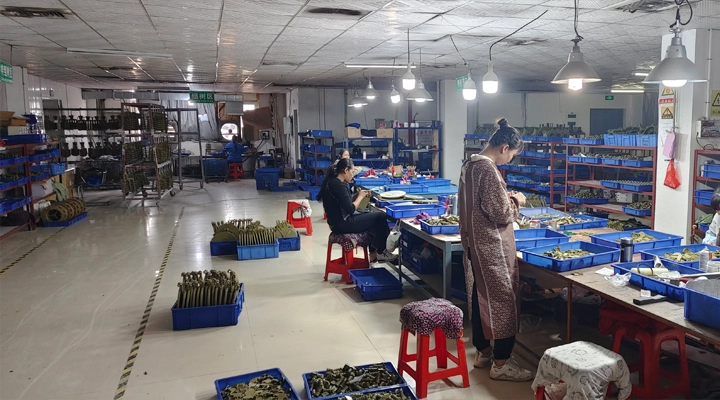
3, Wax Inspection of the investment casting process steps:
The wax inspection process in investment casting is a crucial step that occurs after the wax patterns have been created but before the investment molding process begins. This inspection ensures the quality and integrity of the wax patterns, which ultimately influences the success of the casting process.
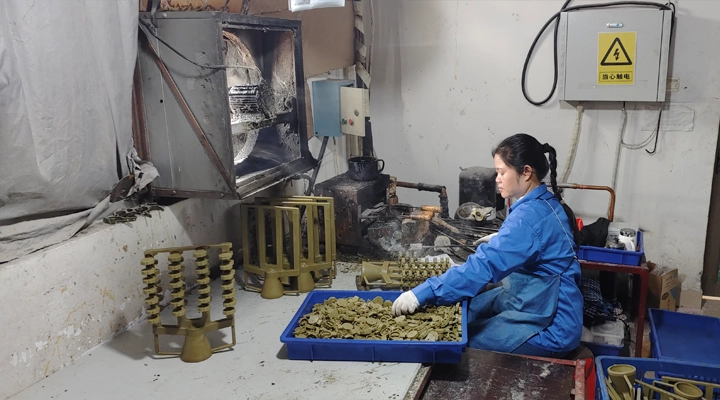
4, Wax Assembly of the investment casting process steps:
Multiple wax patterns are attached to a central wax sprue to create a tree-like assembly. Multiple wax patterns are usually attached to a central wax sprue or gating system to form a tree-like structure. This arrangement allows for efficient casting of multiple parts in a single investment mold.
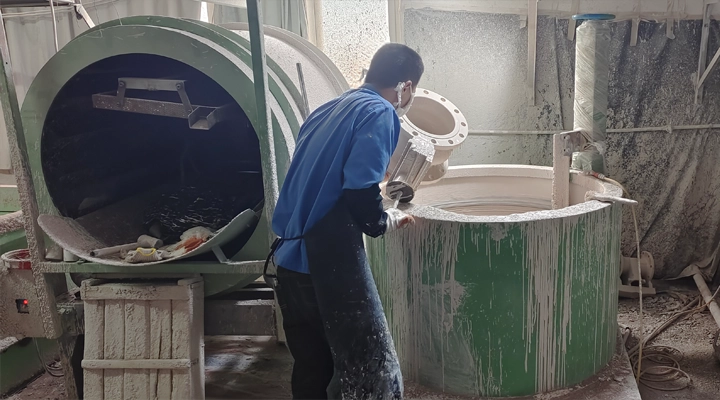
5, Slurry Coating of the investment casting process steps:
The slurry coating process is a key step in investment casting, also known as precision casting or lost-wax casting. This process involves applying layers of ceramic slurry to wax patterns to create a ceramic shell mold. The ceramic shell serves as the mold for casting molten metal.
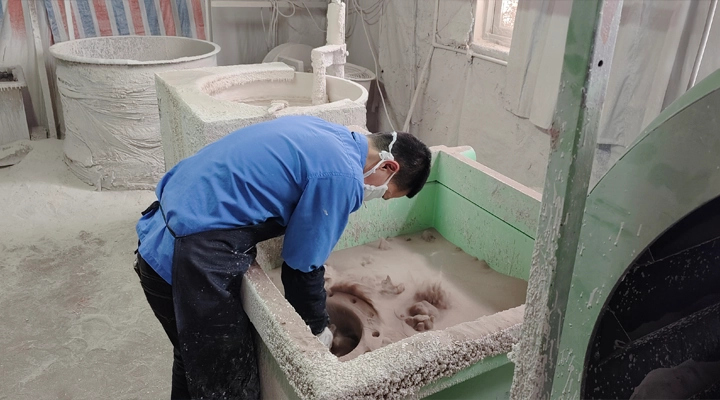
6, Stuccoing of the investment casting process steps:
The stuccoing process in investment casting is a step within the overall ceramic shell building process. Stuccoing involves applying a coarse ceramic material, known as stucco, onto the wet surface of the ceramic shell to create a textured layer. This process is important for improving the surface characteristics of the ceramic shell and enhancing its ability to adhere to subsequent layers.
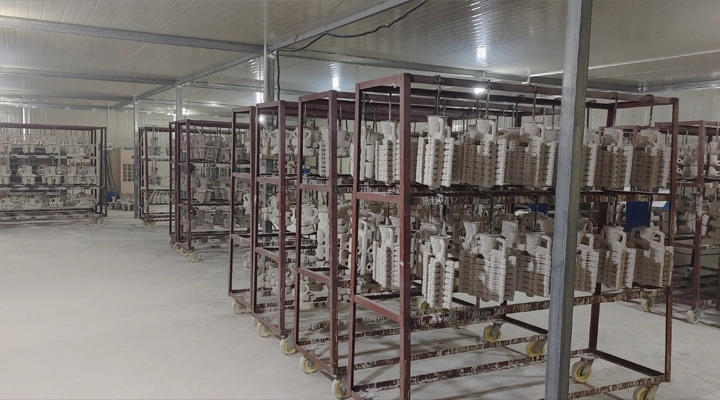
7, Air-Drying of the investment casting process steps:
The drying process in investment casting is a critical step that follows the application of ceramic slurries and stucco to wax patterns, forming the ceramic shell mold. Drying is necessary to remove excess moisture from the ceramic shell, ensuring that it achieves the desired strength and hardness..
8, Repeat Steps 5&6&7:
The wax tree is dipped in a ceramic slurry multiple times to create a shell of the desired thickness.
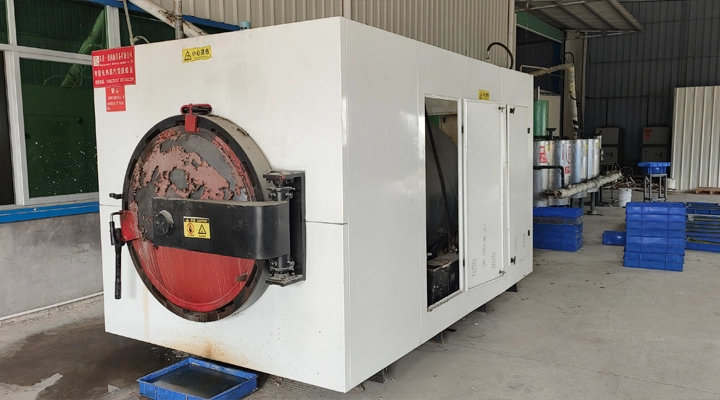
9, Dewaxing of the investment casting process steps:
The dewaxing process in investment casting is a crucial step that involves the removal of the wax patterns from the ceramic shell mold before casting molten metal. Dewaxing creates cavities in the ceramic shell, which will later be filled with molten metal to produce the final castings.

10, Preheating of the investment casting process steps:
The preheating process in investment casting is a crucial step that occurs before pouring molten metal into the ceramic shell molds. Preheating serves multiple purposes, including ensuring uniform temperature distribution, preventing thermal shock to the molds, and facilitating better metal flow during casting.
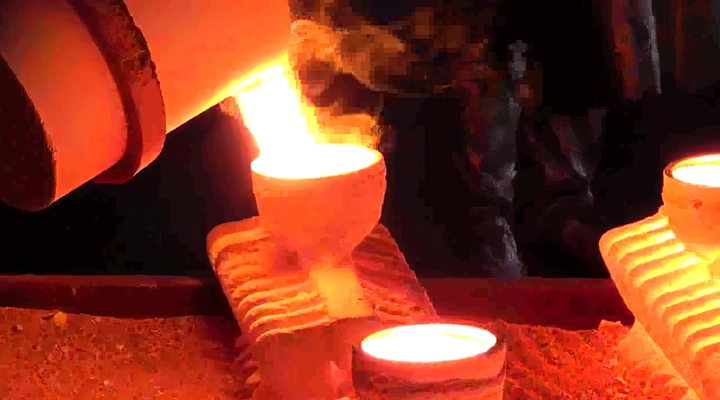
11, Pouring of the investment casting process steps:
Molten metal is poured into the mold cavity to create the castings. The metal solidifies within the ceramic shell, taking the shape of the original wax patterns. This step follows the wax pattern removal (dewaxing) and preheating of the ceramic shell.
12, Cooling and Solidification of the investment casting process steps:
After casting, the entire tree with attached castings is allowed to cool and the metal solidifies. The ceramic shell becomes brittle and can be easily broken.

13, Shell Breakout of the investment casting process steps:
The shell removal process in investment casting is a crucial step that follows the cooling and solidification of the cast metal within the ceramic shell mold. This process involves breaking away or removing the ceramic shell to reveal the final cast metal part.
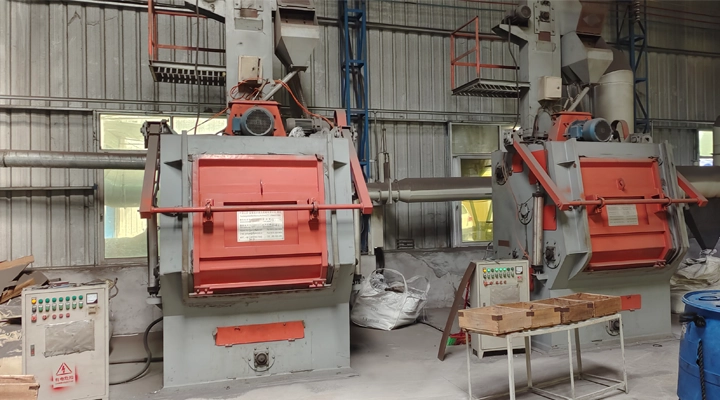
14, Shot Blasting/Sand Blastin of the investment casting process steps:
Shot blasting, also known as sandblasting, is a surface preparation process commonly used in various industries, including investment casting. The purpose of shot blasting in investment casting process is to clean and prepare the surface of castings before further processing or finishing.

15, Cut Off of the investment casting process steps:
The cut-off process involves physically separating each casting from the central sprue. This can be done using various tools and methods, including sawing, abrasive cutting, or other cutting techniques.
16, Cleaning and Inspection of the investment casting process steps:
Once the cut-off process is complete, the individual castings are thoroughly cleaned to remove any residual material from the cut-off operation. This is followed by a visual inspection to ensure that each casting meets the specified quality standards.

17, Post-Cut Treatments of the investment casting process steps:
Depending on the specific requirements of the castings, additional treatments or finishes may be applied after the cut-off process. This may include heat treatment, surface finishing, or other processes.

18, Inspection of the investment casting process steps:
The individual castings are subjected to a final inspection to ensure that they meet dimensional accuracy, surface finish, and other quality requirements.
Investment casting is a versatile and precise process that can create parts with complex shapes and high tolerances. However, it can be time-consuming and costly compared to other manufacturing processes.
💡 Key Takeaways: The 18-step investment casting process is a meticulous journey from design to final product, involving precise engineering, careful material handling, and rigorous quality control at every stage.
Applications of Investment Casting
Investment casting finds applications across a wide range of industries due to its ability to produce complex, high-precision parts. Let’s explore some key areas:
Aerospace Industry
In aerospace, precision and reliability are paramount. Investment casting is used to create:
– Turbine blades for jet engines
– Structural components for aircraft frames
– Fuel system components
Imagine the intricate internal cooling channels in a turbine blade – investment casting makes these possible!
Automotive Sector
The automotive industry relies on investment casting for:
– Engine components like cylinder heads and pistons
– Turbocharger wheels
– Suspension parts
These complex production pieces require the high dimensional accuracy that investment casting provides.
Medical Devices
In the medical field, investment casting is used to create:
– Orthopedic implants
– Dental prosthetics
– Surgical instruments
The ability to produce intricate metal parts with biocompatible materials makes investment casting invaluable in this sector.
Jewelry and Art
The process that began with ancient artisans continues to be used for:
– Fine jewelry production
– Artistic sculptures
– Decorative architectural elements
Investment casting allows for the replication of highly detailed designs in precious metals.
💡 Key Takeaways: Investment casting’s versatility makes it indispensable in industries ranging from aerospace to artistic production, where complex, precise, and reliable metal parts are required.
Industries Utilizing Investment Casting
Investment casting’s versatility makes it a go-to method for various industries:
Energy Sector
– Solar panel components
– Wind turbine parts
– Oil and gas equipment
Marine Industry
– Propeller blades
– Valve bodies
– Pump impellers
Consumer Goods
– High-end kitchenware
– Sports equipment components
– Camera bodies
Defense Industry
– Firearm components
– Missile parts
– Armor components
These industries rely on investment casting for both small-scale production and mass production of complex parts. The process’s ability to create different types of investment casting products with high precision makes it invaluable across diverse fields.
💡 Key Takeaways: Investment casting serves a wide range of industries, from energy and marine to consumer goods and defense, demonstrating its versatility in producing complex parts at various scales.
Comparison with Other Casting Methods
Investment casting offers unique advantages when compared to other casting methods:
vs. Sand Casting
– Investment casting provides better surface finish and dimensional accuracy
– Sand casting is generally less expensive for large, simple parts
vs. Die Casting
– Investment casting can handle a wider range of metals
– Die casting is faster for high-volume production
vs. 3D Printing (Additive Manufacturing)
– Investment casting can produce larger parts more economically
– 3D printing offers faster prototyping and design iteration
Each method has its strengths, and the choice often depends on factors like part complexity, material requirements, and production volume.
💡 Key Takeaways: While investment casting excels in producing complex, high-precision parts, other methods like sand casting, die casting, and 3D printing may be preferable in certain situations based on specific project requirements.
The Science Behind Investment Casting
The investment casting process is grounded in scientific principles:
Material Science
– Understanding metal properties at high temperatures
– Ceramic shell composition for optimal strength and permeability
Thermodynamics
– Heat transfer during pouring and solidification
– Thermal expansion and contraction of materials
Fluid Dynamics
– Flow behavior of molten metal in mold cavities
– Factors affecting metal fill and solidification rates
Metallurgy
– Grain structure formation during solidification
– Heat treatment effects on final material properties
These scientific foundations ensure the production of high-quality, consistent parts. Understanding the science allows engineers to optimize the process for different materials and designs.
💡 Key Takeaways: The science of investment casting involves a complex interplay of material science, thermodynamics, fluid dynamics, and metallurgy, enabling the production of high-quality, precision metal components.
Future of Investment Casting
The future of investment casting looks bright, with several exciting developments on the horizon:
Integration with Additive Manufacturing
– 3D printed wax patterns for faster prototyping
– Hybrid processes combining additive and investment casting
Advanced Materials
– Development of new alloys specifically for investment casting
– Exploration of ceramic matrix composites
Automation and AI
– Increased use of robotics in the casting process
– AI-driven process optimization and quality control
Sustainability
– Research into more eco-friendly wax and ceramic materials
– Energy-efficient furnaces and recycling systems
Leading experts in the field are constantly pushing the boundaries of what’s possible with investment casting. As technology advances, we can expect even greater precision, efficiency, and material options in the future.
💡 Key Takeaways: The future of investment casting is set to be shaped by integration with additive manufacturing, advanced materials, automation, AI, and a focus on sustainability, promising even greater capabilities and efficiency.
Tips for Successful Investment Casting
To achieve optimal results in investment casting, consider these tips:
Design Optimization
– Incorporate draft angles for easy pattern removal
– Avoid sharp corners to prevent stress concentration
Material Selection
– Choose appropriate metals based on part requirements
– Consider ceramic shell materials compatible with the chosen metal
Process Control
– Maintain consistent temperatures throughout the process
– Control cooling rates for desired material properties
Quality Assurance
– Implement rigorous inspection at each stage
– Use non-destructive testing methods for final parts
Wax Injection Mode Build Considerations
– Optimize gate locations for uniform filling
– Consider the impact of internal cavities on wax pattern integrity
By following these guidelines, manufacturers can improve the quality and consistency of their investment cast parts, ensuring optimal performance in their intended applications.
💡 Key Takeaways: Successful investment casting requires careful attention to design, material selection, process control, and quality assurance, with special consideration given to wax injection mode build factors.
Investment Casting: An Ancient Process Meets Modern Technology
Investment casting beautifully bridges the gap between ancient craftsmanship and cutting-edge technology:
Historical Roots
– Originated over 5,000 years ago in ancient civilizations
– Used to create intricate jewelry and religious artifacts
Modern Innovations
– Precision-engineered wax injection molds for consistency
– Computer-aided design and simulation for optimization
Timeless Principles
– The basic lost-wax process remains unchanged
– Continues to produce highly detailed, complex parts
Future Potential
– Integration with additive manufacturing and AI
– Exploration of new materials and applications
This blend of old and new makes investment casting a unique and valuable manufacturing process, capable of meeting the demands of modern industry while maintaining its artisanal heritage.
💡 Key Takeaways: Investment casting’s evolution from an ancient technique to a high-tech manufacturing process showcases its enduring relevance and adaptability in meeting complex production needs.
Conclusion
As we conclude our journey through the 18-step investment casting process, it’s clear that this ancient technique has evolved into a sophisticated manufacturing method. From the initial wax pattern creation to the final inspection, each step plays a crucial role in producing high-quality, complex metal components. The versatility of investment casting allows for the creation of intricate parts with exceptional precision, making it invaluable across various industries.
By mastering this process, manufacturers can unlock new possibilities in producing turbine blades, aerospace components, and other precision parts. Whether you’re working with stainless steel, carbon steel, or other alloys, investment casting offers unparalleled accuracy and surface finish. As technology advances, the integration of additive manufacturing and other innovations will continue to enhance this time-tested method.
We hope this comprehensive guide has provided you with valuable insights into the art and science of investment casting. By implementing these techniques and considering the tips shared, you can elevate your manufacturing capabilities and create products that meet the highest standards of quality and precision. Thank you for joining us on this exploration of investment casting – may your future endeavors in precision manufacturing be filled with success!
Custom investment Casting
Leave your requirement here we would reply you asap

